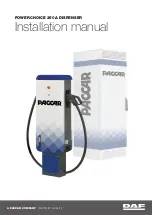
During the summer season, fuel ethanol may contain a maximum of 85%
denatured ethanol (Ed85) and 15% unleaded gasoline. The fuel ethanol
has a higher octane rating than unleaded regular or premium gasoline
and this allows the design of engines with greater efficiency and power.
Winter blends may contain up to 75% denatured ethanol (Ed75) and up
to 25% unleaded gasoline to enhance cold engine starts. Severely cold
weather may require additional measures for reliable starting. Refer to
the Starting chapter
Ethanol is more chemically active than gasoline. It corrodes some metals
and causes some plastic and rubber components to swell, break down or
become brittle and crack, especially when mixed with gasoline. Special
materials and procedures have been developed for flexible fuel vehicles
and the dispensers used by ethanol fuel providers.
FUEL QUALITY
Note:
Use of any fuel other than those recommended may cause
powertrain damage and a loss of vehicle performance; repairs may not be
covered under warranty.
Choosing the Right Fuel
Use only UNLEADED fuel or UNLEADED fuel blended with a maximum
of 15% ethanol. Do not use fuel ethanol (E85), diesel fuel, fuel-methanol,
leaded fuel or any other fuel because it could damage or impair the
emission control system.
Your vehicle was not designed to use fuel or fuel additives with metallic
compounds, including manganese-based additives. The use of leaded fuel
is prohibited by law.
Choosing the Right Fuel With a Flex Fuel Vehicle (If Equipped)
Note:
If your vehicle is flex fuel capable, it will have a yellow bezel
placed over the fuel fill inlet.
Flex fuel vehicles are designed to use only FUEL ETHANOL
(Ed75-Ed85) fuel blends which contain 51 to 83% ethanol and
UNLEADED fuel regular unleaded gasoline or any mixture of the two
fuels.
Fuel and Refueling
123
2013 Econoline
(eco)
Owners Guide gf, 2nd Printing, November 2012
USA
(fus)
















































